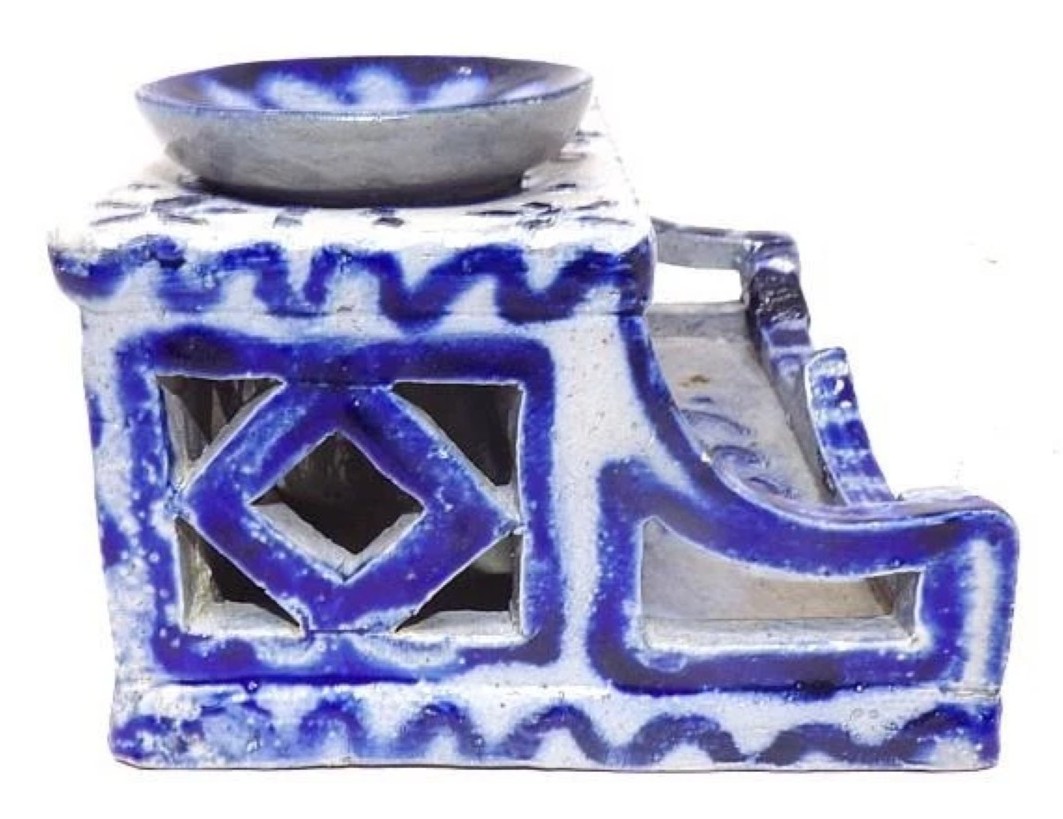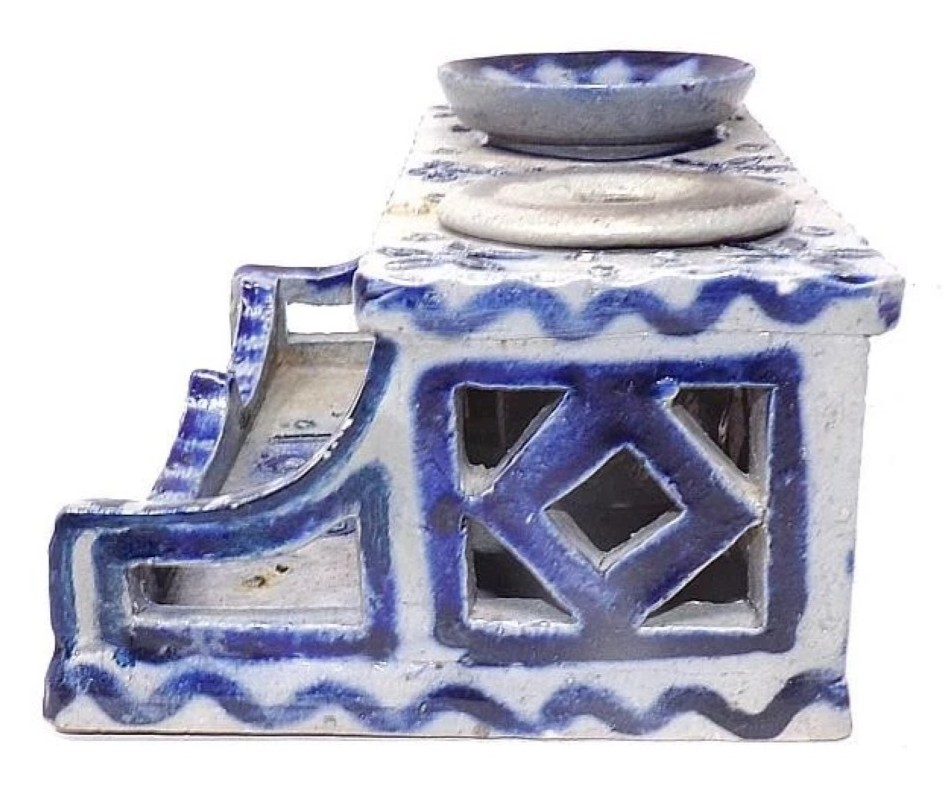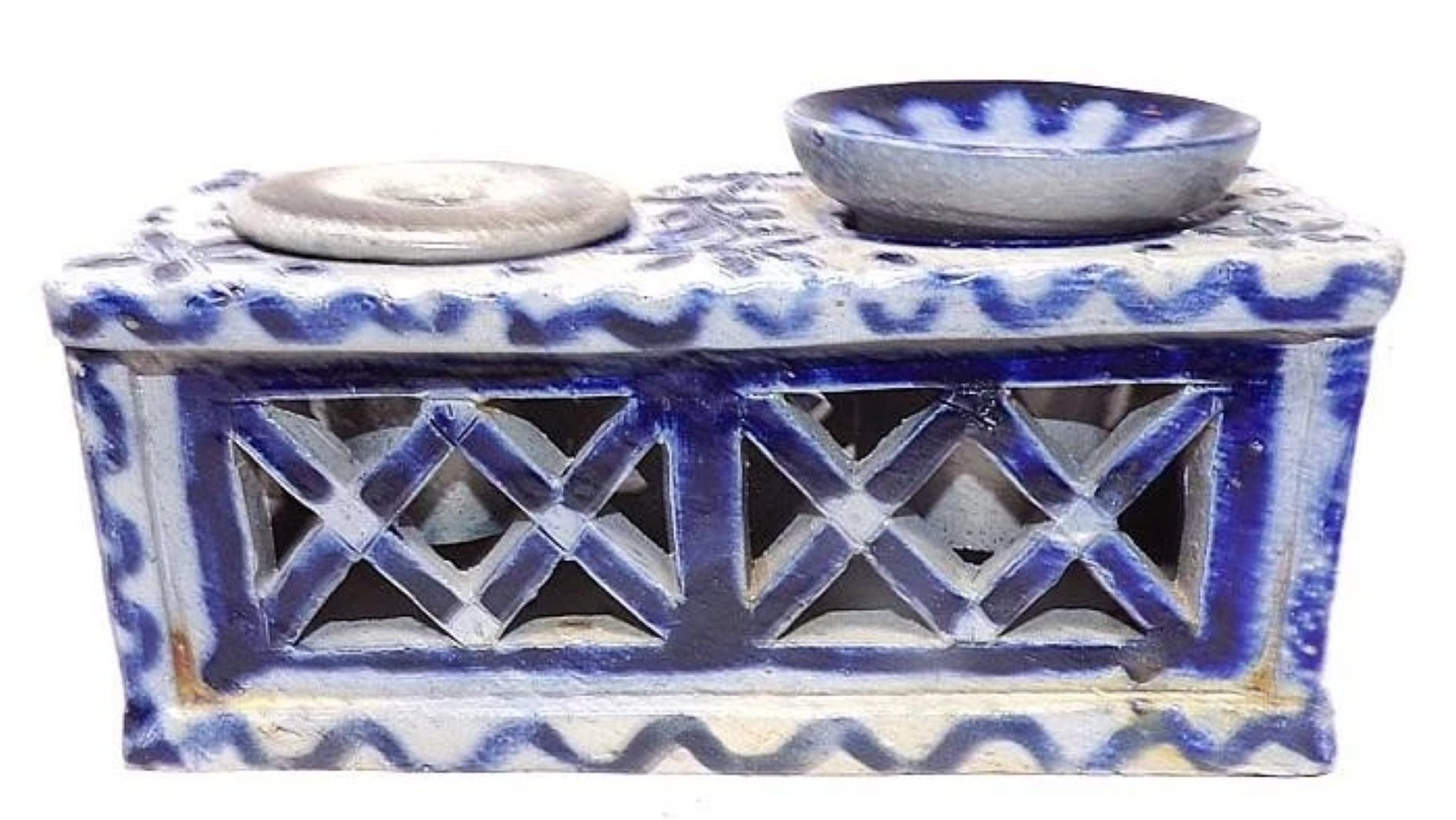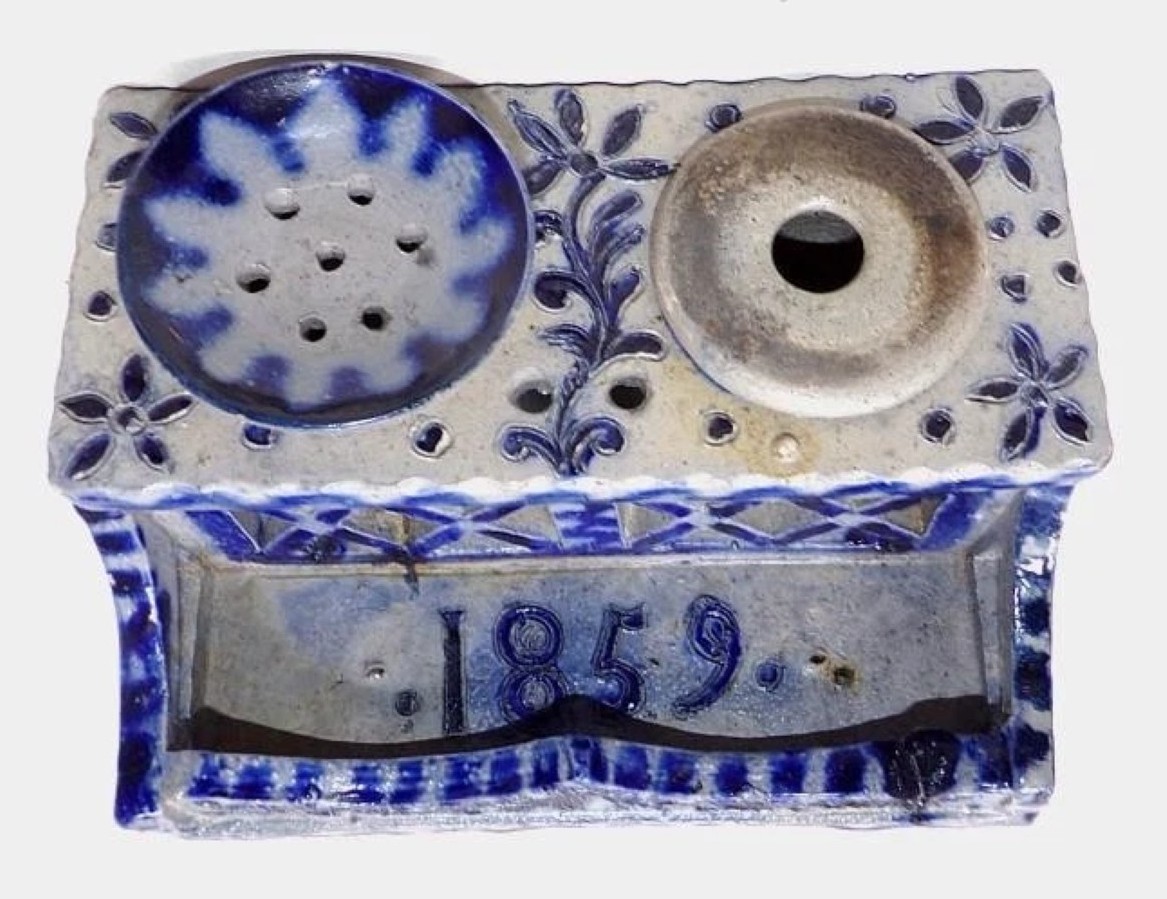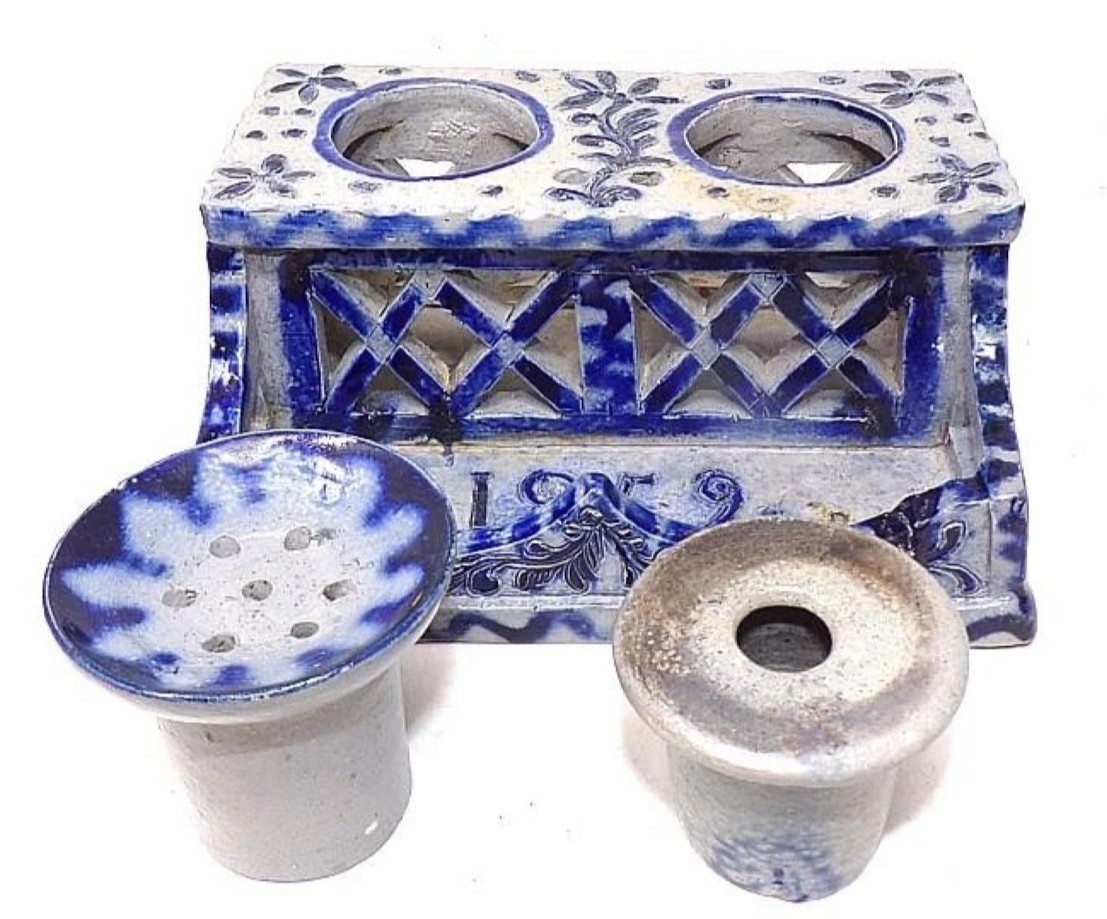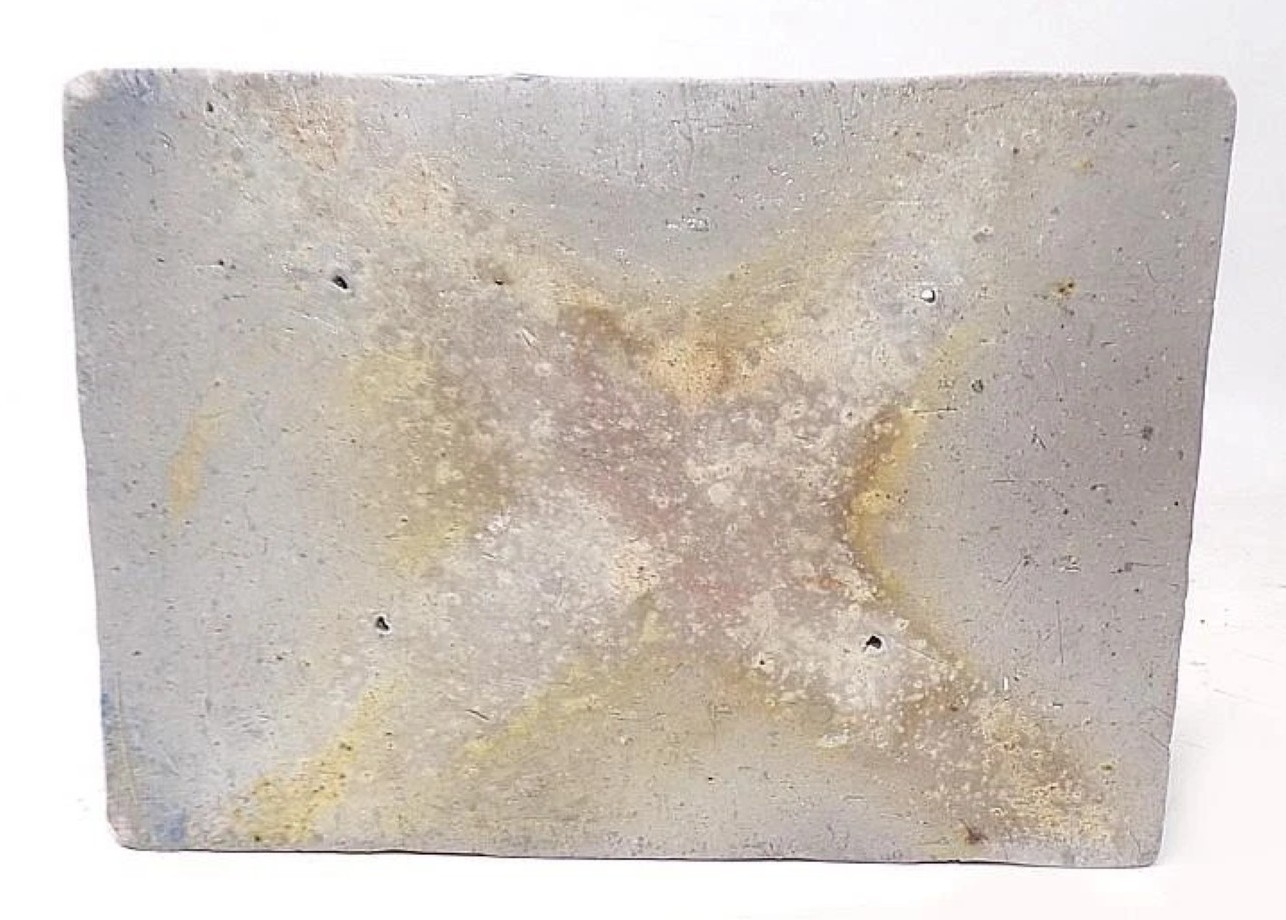
Inkipedia
Inkstand Westerwald Salt-Glazed Stoneware
| Categories | Ceramics/Porcelain non-Figural, Early - Primitive |
| Material | Stoneware |
| Markings | "1859" |
| Manufacturer | Undetermined |
| Origin | Germany |
| Date or Era | circa 1859 |
| Measuring | 5 ½” x 4” x 2 ¾” high |
Description of the Inkstand:
- Material and Glaze: The inkstand is made of stoneware, a dense, non-porous ceramic. It features a distinctive salt glaze, which is achieved by throwing salt into the kiln during firing. This process creates a characteristic glossy, often slightly pitted or “orange peel” texture on the surface, along with subtle variations in color, typically shades of grey, blue, and brown. The glaze makes the piece durable and impervious to liquids like ink.
- Form and Components: The inkstand is a rectangular or oblong piece, serving as a base for two integrated functional elements.
- Removable Inkwell: One circular opening holds a removable inkwell.
- Removable Sander: The other circular opening holds a removable sander (also known as a pounce pot). Before blotting paper became common, sanders were used to sprinkle fine sand or pounce (a powdered substance) over wet ink to dry it quickly.
- Decoration: The inkstand is richly decorated with typical Westerwald motifs, applied in relief and incised.
- Cobalt Blue Decoration: The relief details are highlighted with cobalt blue, a signature color of Westerwald stoneware, which contrasts beautifully with the greyish-brown body of the stoneware.
- Figural/Foliate Motifs: The decoration includes classic foliate designs.
- Date Inscription: A key feature is the year “1859” prominently worked into the design of the pen tray area on the front of the inkstand.
Westerwald Stoneware:
The Westerwald region, located in Rhineland-Palatinate, Germany, has been a central hub for stoneware production for centuries, particularly from the 17th century onwards.
- Rich Clay Deposits: The region is abundant in high-quality clay suitable for stoneware, which is dense, fine-grained, and fires at high temperatures without vitrifying completely, making it impervious.
- Salt Glazing: Westerwald potters perfected the salt-glazing technique. As mentioned, salt is thrown into the kiln, vaporizing and reacting with the silica in the clay to form a thin, glass-like layer on the surface. This unique glaze provided a durable, non-porous, and distinctive finish.
- Cobalt Decoration: The iconic cobalt blue decoration became a hallmark of Westerwald stoneware. The blue pigment, derived from cobalt oxide, was applied to the unfired clay, and during firing, it fused with the salt glaze, creating vibrant blue patterns that contrasted with the natural grey or brown of the stoneware body.
- Relief Decoration: A common decorative method involved applying molded or sprigged-on relief elements to the surface of the vessel before firing. These could include inscriptions (like the date on this inkstand).
- Types of Wares: Westerwald factories produced a vast array of stoneware items, from everyday utilitarian jugs, tankards, and storage jars to more decorative pieces like inkstands, steins, and punch bowls. They were highly sought after both domestically and for export across Europe and beyond.
Sold for $250 in June 2025
Content disclaimer. The information posted is the owner’s best knowledge and may not have been vetted by the SOIC. We welcome comments, corrections, and additions, working to make our website information comprehensive and accurate.
Join the Society of Inkwell Collectors (SOIC) – it’s free!
Founded in 1981 as a non-profit organization,
we are documenting inkwells (and accessories).
We’re here to help and inform!

